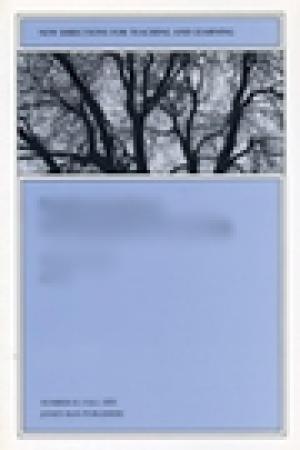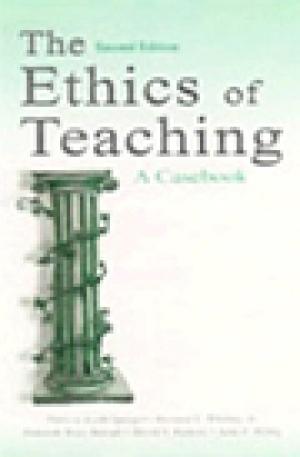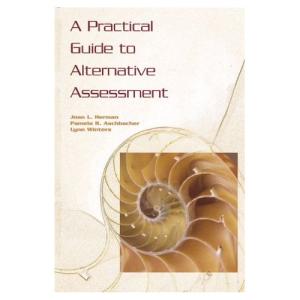Resources

For several decades, college teachers have been asking students to engage in self-evaluation, to reflect on their academic work and describe and evaluate it in writing. Student self-evaluation is both a process--consisting of acts of reflecting, composing, and writing--and a product, a writtten document. Student self-evaluation does not obviate the need for student exams and papers, crucial indicators of student mastery of material or complexity of thinking. Rather, student self-evaluation supplements and complements that information by asking students to describe in their own words their learning and its value to them. This writing, and the conversations that faculty members and students have about it, can be instructional, illuminating, and at times transformative. Student self-evaluation is primarily a learning strategy, but it is also a promising assessment approach: while enriching learning for students, it also can help teachers and institutions learn about student learning. This volume of New Directions for Teaching and Learning introduces the many forms of student self-evaluation in undergraduate teaching settings and describes how student self-evaluation creates connections between learners and learning, knowers and the known, and the self and the mind. This is the 56th issue of the quarterly journal New Directions for Teaching and Learning. For more information on the series, please see the Journals and Periodicals page. (From the Publisher)

Lowman expands his earlier model of effective teaching to place more emphasis on motivational skill and commitment to teaching. In this second edition, he presents still more options on how to organize classes and use group work to promote learning. (From the Publisher)

This book covers all significant aspects of the design, development, delivery, and evaluation of instruction using Internet's World Wide Web. In 59 chapters, this 480-page-volume, 7 x 10 inches, provides users of the Web with online sources, case studies, references, and other forms of information regarding ways to use this new techology to improve opportunities for learning at all levels. Nearly one hundred authors, representing institutions situated throughout the world, participated in the writing of this timely volume-using the Web to coordinate their efforts, thus assuring a remarkably complete treatment of this important topic. E-mail and World Wide Web addresses are given for all chapter authors, most of whom have active Web sites that can provide additional information to readers of the book. (From the Publisher)

The quiet revolution that has occurred in academic libraries has resulted in the development of programs of bibliographic or library instruction. The chapters in this volume reflect the tremendous diversity and scope of activities that fall under the umbrella of a bibliographic or library instruction program. The goal of all of these activities is to help individuals develop the intellectual and manipulative skill needed for the retrieval, assimilation, and critical analysis of information. This volume is intended to provide a compact overview of this expanding area of library service. (From the Publisher)

Kelsey argues that the central purpose of a theological school is to understand God more truly, that Christian traditions intersect with the Greek idea of education as paideia and the much later German idea of education as wissenschaft to create the models of theological schooling operative today, and that the issues facing theological education arise because of the conflicting understandings of the world and God embodied in these ideas. He proposes reconceptualizing ways of thinking about theological education based on the desire to understand God more truly and to do so in the concrete particularities of faith communities. (From the Publisher)

This book evolved by collecting a variety of teaching situations that commonly occur in college and university settings. The authors then created responses to the situations and circulated both the cases and the responses to reviewers from a number of departments across the country. As a result, the vast majority of the cases are "discipline free." (From the Publisher)

Covers Major Models of Teaching. Teaching Models. Designed for use as a main or supplemental text in undergraduate- or graduate-level courses entitled Elementary Curriculum, Introduction to Instruction, Introduction to Teaching, Models of Teaching, and Instructional Methods. (From the Publisher)

This book is the result of a study conducted by the Association of Theological Schools with the support of the Lilly Endowment, which investigates the "multifaceted study of theological education." The purpose of the study is to engage in pragmatic ways to revise theological curricula in light of the present global situation. (From the Publisher)

Joan Herman, Pamela Aschbacher, and Lynn Winters offer cogent guidance on the creation and use of alternative measures of student achievement. They present a systemic and iterative process model that links assessment with decisions affecting curriculum and instruction, according to developmental theories of learning and cognition. The authors review the purposes of assessment and provide a substantive rationale for alternative structures. The heart of the book is the illumination of several key assessment issues that reaffirm our knowledge that assessment tasks must be informed by the most important elements of instructional practice. Includes sample forms and figures to help readers begin revamping their assessment programs. (From the Publisher)

Wabash Center Staff Contact
Sarah Farmer, Ph.D
Associate Director
Wabash Center
farmers@wabash.edu